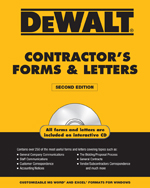Taking a traditional paper and pen approach may work for a very small facility whose passive fire protection maintenance needs are minimal, but in the current climate of advanced technology, the paper and pen approach likely has disadvantages that far outweigh the biggest, “we’ve always done it this way,” advantage. Simple programs such as Microsoft Word, Excel, and even Access, can provide more detailed and easily maintained record keeping for procedures, inspection results, educational documents and remediation efforts.
Using basic computer applications allows building owners and the contractor to more readily document their maintenance and management efforts. Before and after pictures can be married up with excel records, and these records can easily be sorted. These programs are inexpensive and easy to use—most people are using these applications in one way or another. At a certain point, however, even advanced Excel and Access databases fall short for long-term maintenance, as they provide a static viewpoint of a facility at one point in time.
PROACTIVE FIRESTOP MANAGEMENT
A living database, or electronic barrier management software, is the most technologically advanced and professional approach to proactive fire barrier management. Custom software applications can automatically schedule inspections, store procedural documents and educational materials, and most importantly, track all fire resistive systems, so there is a history of each element for the lifetime of that system. For example, a record is created and a picture is taken when a firestop system is installed during new construction. If that penetration is altered six months later, it can be logged as no longer maintaining its integrity and a picture is taken. A qualified firestop contractor then remediates the existing condition, takes a picture and records the system as being compliant. This penetration now has a living record, showing its condition over time.
While customized software systems provide a living database, they also come with disadvantages. First and foremost—they are expensive. Any customized software comes at a higher price than standard Word and Excel applications. This cost may be absorbed by the contractor or building owner, but no matter who pays for it, it is an added business expense that adds an extra dimension to traditional contracting. Another disadvantage to electronic barrier management is the training involved. The contractor, building owner and manager are end users, and must learn a new application in order to effectively use the program. These two factors alone are enough to deter many contractors and building owners and managers from using electronic barrier management programs.
Although there are different approaches to documentation management for the maintenance of fire resistive systems, some kind of system must be implemented in order to facilitate long term maintenance, and properly implement the DIIM philosophy. The documentation system is the backbone, or what holds it together over time. It is critically important that any facility’s fire and smoke barrier documentation system adequately serve the needs of all involved in the maintenance program. Depending on facility size, mind-set, cost, and other factors, this may mean an electronic barrier management system, an Excel or Access database, or pen and paper. One thing is certain, no matter what documentation system is chosen: having a maintenance process in place—putting the “M” in DIIM—is an integral part of ensuring the fire safety of a building. W&C











Report Abusive Comment